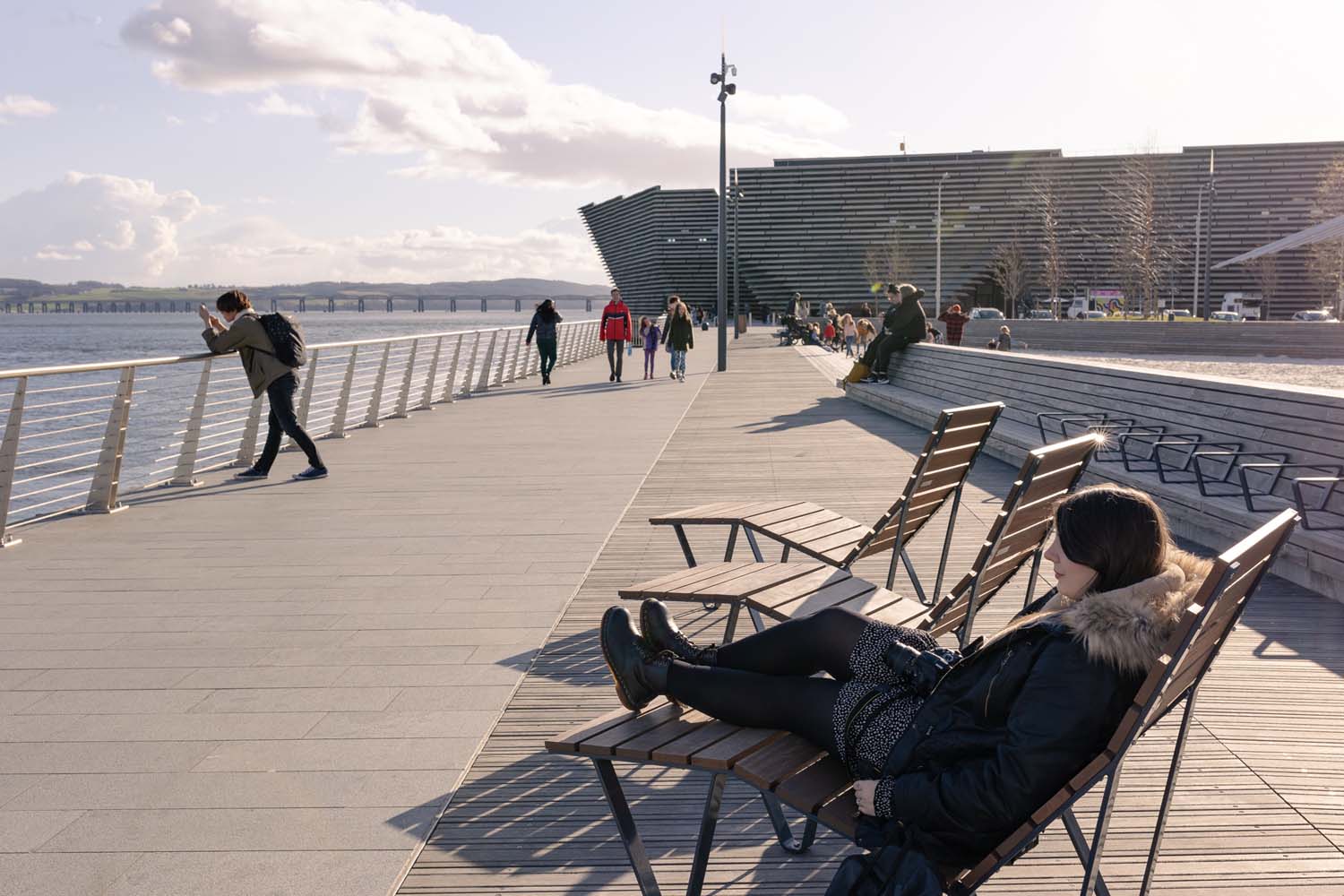Walkable and caring town centres

We are building a conversation around the ten principles of a caring place. In this blog Penny Morriss from Living Streets Scotland talks about walkable and caring town centres. This relates to principle two: accessible quality external environments.
We all understand the importance of being as independent as possible as we age. It is about being able to make choices about what we do, with whom, where, and when. Being able to go out and to stay connected to our friends and neighbours. Being able to get to the places we want to go, and being able to enjoy them once we get there.
At some stage, we all may need a bit more support to allow us to continue to make these choices and participate in these everyday activities. This support might be informal, provided for us by caring family or friends. Or it might be a more formal provision via a health or social care service.
It could also be far more tacit. It could take the shape of a caring place, where the environment provides the means of enabling us to continue to make choices about where we go, and when, and with whom.
There are examples of buildings specifically designed to meet older people’s needs with regards to enabling independence in the home or service facility. Far fewer examples of enabling outdoor spaces exist, although regular access to the outdoors is essential for an older person’s wellbeing.
Interaction through walking
How would you judge a place to be a ‘caring place’? You can think about walking as an indicator of an enabling, supportive environment, and as an indicator of the quality of life perhaps of the people that frequent it.
Who is walking there? Are there older folk walking amongst young families? Are young people congregating, sharing the space with older neighbours, comfortably and without suspicion? How many people are walking? Are people just walking through, or do people linger? Do people interact?
Walking is more than a measure of the quality of a caring place. Walking is a mechanism to bring people into proximity, which is a means of eliciting understanding and compassion, which can enable kindnesses.
Kindness is fundamental to care. It facilitates formal caring: institutional support for cared-for people and the people and services that care for them. And it facilities informal caring in small acts of every day kindness.
A successful caring place then is an environment that accommodates different paces of walking, and enables different walkers. It enables everyone to walk equally and together. It encourages kindness by making interaction possible, and by giving people permission to interact.
Inclusive design for getting outdoors
The I’DGO project explored the factors that constitute a supportive outdoor environment, and the qualities that older people considered important for a successful, enabling place. The findings from this large-scale research project were perhaps unsurprising:
- Well maintained, pleasant streets and spaces
- Spaces free of traffic and other nuisance
- Facilities meeting physical needs such as public toilets, benches, shade and shelter
- Amenities located within short and walkable distances from each other along accessible routes
These are places that enable people to come together, to play and socialise, to attend to everyday business, and to be in proximity to other people.
There is a thread running through this work, drawing everything together. It is that these are places where people of all ages and physical and cognitive abilities are supported to be able to walk together.
Many of our towns came about across a time when shanks’ pony was the dominant means of getting about. Decisions about what was built where were determined by distances that could be walked. The scale of a settlement and community was measured by walking.
People once lived life more on their streets. Town centre streets once were less places to park a car, and more places to take part in civic and community life: usually on foot. We know what we need to do to create caring town centres, because we have done it many times before.
Perhaps this is far more instinctive than it is complicated. Perhaps we just need to think about how we plan, design, manage and maintain these places as places for walking, for everyone.
About the author
Living Streets Scotland is part of the UK charity for everyday walking, working for a nation where people of all generations can enjoy the benefits of walking on streets that meet their needs. Penny Morriss leads on Living Streets Scotland’s communities programme including Walking Connects. This is a project supporting older people to have more say about their streets and places.
Header image credit: Miss Lydia Photography
Share your story
If you would like to share your knowledge and experiences of what it takes to design caring places, get in touch.
